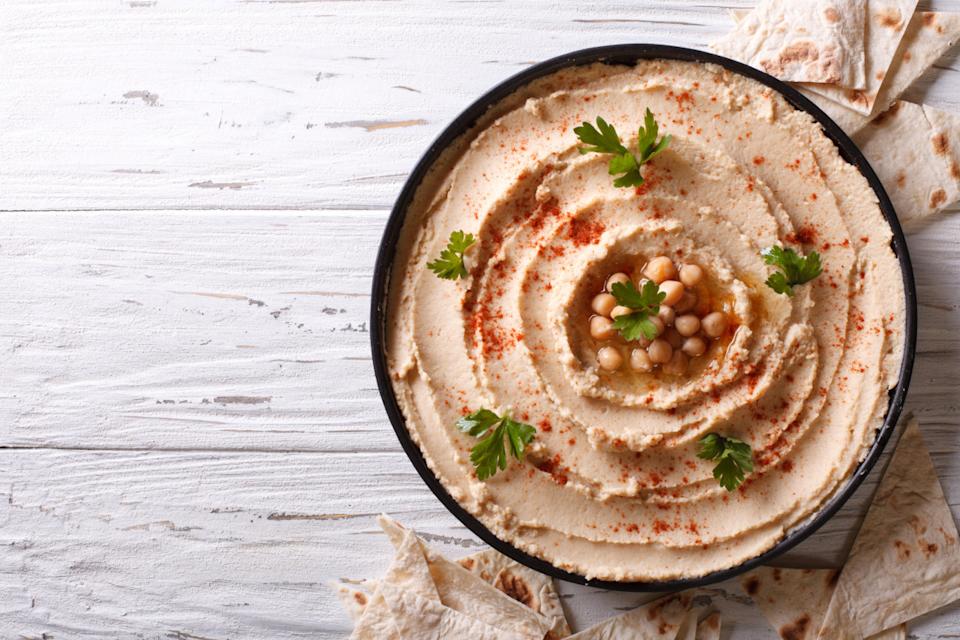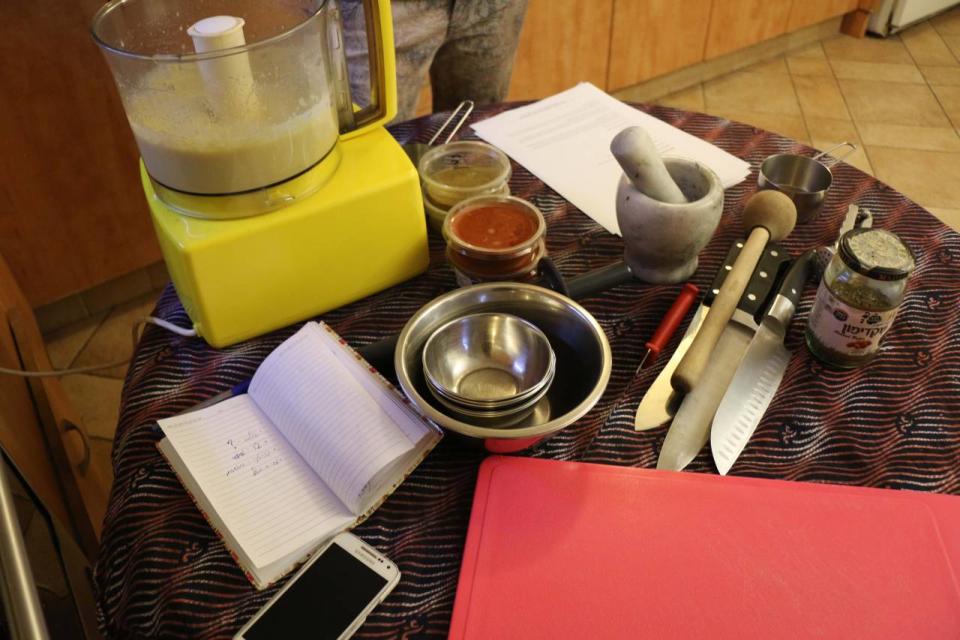Americans Are Making Hummus All Wrong
I didn’t know what hummus was supposed to taste like until my recent food pilgrimage to Tel Aviv.
The word hummus is Arabic in origin, simply meaning chickpeas, and it is believed that the dish as we know it first appeared in Cairo in around the 13th century. Each country in the region claims its hummus is the best, the true hummus.
Israelis are simply mad about their hummus, and they take it very, very seriously. For them this dish is more than a snack. It is a staple of nearly every meal, and the preparation of it is a near sacred process.
I wanted to learn to make hummus like an Israeli — a real Israeli. This is what led me into the home of Imbar Rogea, an organic cook who offers one-on-one hummus-making workshops right in her own kitchen.
There are dozens of cooking classes for tourists in Tel Aviv, but there is something much more intimate about spending time with a local, in her home, preparing one of her favorite dishes with intense affection.
The first thing I learned when I arrived at Rogea’s bohemian flat in south Tel Aviv is that Americans are pronouncing hummus all wrong.
Related: How to Make Peru’s Best Ceviche at Home

The Israeli pronunciation, the proper pronunciation I am told over and over again in restaurants throughout this city, has a soft, almost guttural h in front of it with an ooo sound, something that rhymes with who in the middle. We will now eat the whoooomuz, is what you should be saying.
Then there is the case of the chickpeas. Of course, these are the main ingredient in any hummus dish. There are right chickpeas and wrong chickpeas, and this is a decision that matters in your hummus preparation.
Rogea carefully introduces us to each kind of chickpea: the large Spanish style, the much more petite and shapely Bulgarian chickpea, and finally the chickpea that is just right — the Hadas chickpea, an Israeli chickpea that has a size in between the Bulgarian and the Spanish versions and is a bit darker. I’ve never paid so much attention to the varieties of chickpeas in my life, but Rogea assures us it is important. She passes the small, hard peas around the kitchen, encouraging us to touch them and smell them. Many American recipes for hummus don’t specify the type of chickpea at all. And this is yet another mishap.
Related: The Most Over-the-top Hamburger in Every State
Next up comes the proper soaking of the chickpeas, a process that should take between 24 and 48 hours. If you don’t soak them long enough, your hummus will be lumpy. Soak them too long and the peas will ferment and the flavor profile will veer toward sour.
After the soaking comes the cooking, a process that will take, at a minimum, an hour and a half. It’s important to cook your chickpeas with a dash of baking soda to ensure the creamy, smooth texture.
“If you have cooked your chickpeas without soda, you will never get a smooth texture without the lumps,” Rogea says.
To make the cooking class go quickly, and to avoid having strange Americans sleeping on her living room floor for days, Rogea has both soaked and cooked the peas ahead of time.
To make enough hummus for six people to snack on, you’ll want to use a half pound of dried chickpeas at the start. It may not look like enough, but when you soak a chickpea, it doubles in size. And after cooking them, they can weigh almost three times as much.
The best way to blend your homemade hummus is in a food processor, and once the ingredients are prepared, the final steps take just 10 minutes. Rogea started loading up her processor with the soaked and cooked chickpeas.

A food processor is best, but hummus can also be made in a blender or even with a hand mixer if the chickpeas are properly soaked and cooked. (Photo: Jo Piazza)
The other mistakes Americans often make with hummus involve the ingredients; Inferior olive oil and tahini make for inferior hummus.
“You need olive oil that is cold-pressed, not refined,” Rogea informed us.
Related: 10 Foods You Must Have in San Francisco for the Super Bowl
You will need one-third cup of high-quality olive oil to make high-quality hummus. And instead of adding plain water to the hummus mixture, add back the water that you cooked the chickpeas in — between one-third and one-half cup.
Rogea prefers a dark tahini, one that looks almost like peanut butter, and adds a third of a pound. She then adds salt, black pepper, and cumin, a pinch at a time to taste.

Making the perfect hummus isn’t rocket science, but it is an art. Israelis are a passionate bunch about life, and that passion spills over into their food.
Soaking times, cooking times, and cold-pressed olive oil aside, the greatest lesson the American amateur cook can take home from the Israeli kitchen is to infuse all of our dishes with this level of love and passion for what we are preparing.
Let Yahoo Travel inspire you every day. Hang out with us on Facebook, Twitter, Instagram, and Pinterest.

